30+ Movies Based on Urban Legends
American folklore and urban legend movies are an important part of the horror genre.
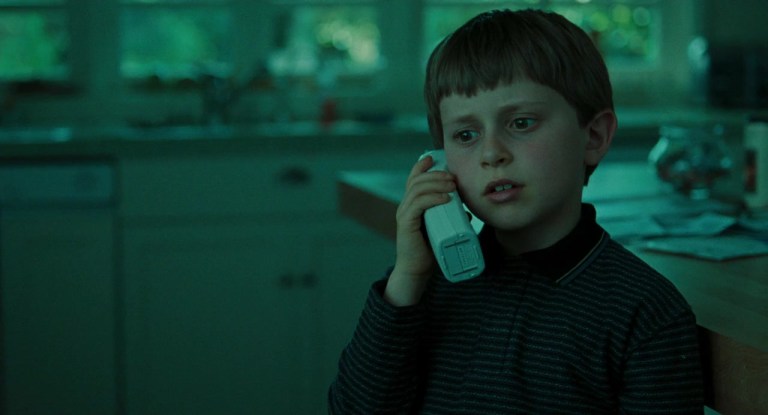
Everyone has heard urban legends, because all cultures all across the planet have them. They are not technically “urban,” since many involve the woods, the sea, or other faraway places, but what unites them is that they are almost always nothing more than legends. In every case, the story is repeated as if it were true; also in nearly every case, there is no verifiable evidence that the story ever happened.

There are a few exceptions. The persistent myth that maniacs routinely poison Halloween candy has only been verified in one 1974 incident where a father poisoned his son in an attempt to collect insurance money. Although there has never been a verified case where a babysitter was taunted with phone calls from a killer inside the house, many link this story to the real-life murder of a babysitter in 1950. Although people across the world have claimed to see creatures resembling Bigfoot, no one has ever brought home a specimen of this animal, whether live or dead.
But yet the legends persist. Perhaps what’s most fascinating about urban legends is that rather than depending on a screenwriter, these are tales of horror that are invented by entire societies and get passed on through oral tradition.
What follows is a list of more than thirty movies based on urban legends both popular and obscure.
Black Christmas (1974)
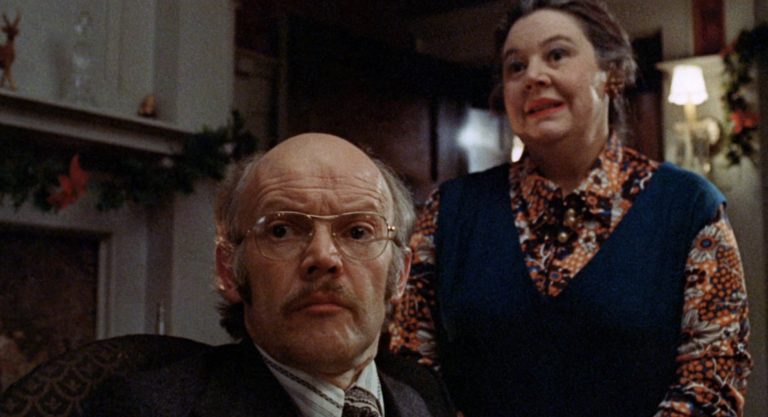
In this horror film about a group of sorority girls who are slowly picked off one-by-one during the holiday season, screenwriter A. Roy Moore based his script both on an urban legend and a real-life serial killer. The urban legend is one that’s repeated through a lot of movies: “The Babysitter and the Man Upstairs.” It takes on several iterations, but the basic plot involves a girl who keeps getting harassing phone calls about whether she’s checked on the children. At first she ignores them, but as the caller becomes more persistent, she calls the police to ask them to trace the call. When they do, they tell her to leave the house—the caller is inside the house. The real-life serial killer that Moore based his script on was that of Wayne Boden, AKA the “Vampire Rapist,” who killed five women in the Montreal area from 1969-1971.
When A Stranger Calls (1979)

This is the most famous, and arguably the most effective, horror movie to base itself on the legend of the babysitter and the man upstairs. Carol Kane stars as a woman who receives harassing phone calls while babysitting, only to realize to her horror that the calls are coming from inside the house. All of this is wrapped up in the film’s first 20 minutes, which are considered by some to be the scariest 20 minutes in film history. What’s little known is that even the urban legend is thought to be partially based on the real-life murder of Janett Christman, a teenage babysitter who was murdered in 1950 and whose killer or killers have never been caught.
The Boogeyman (1980)
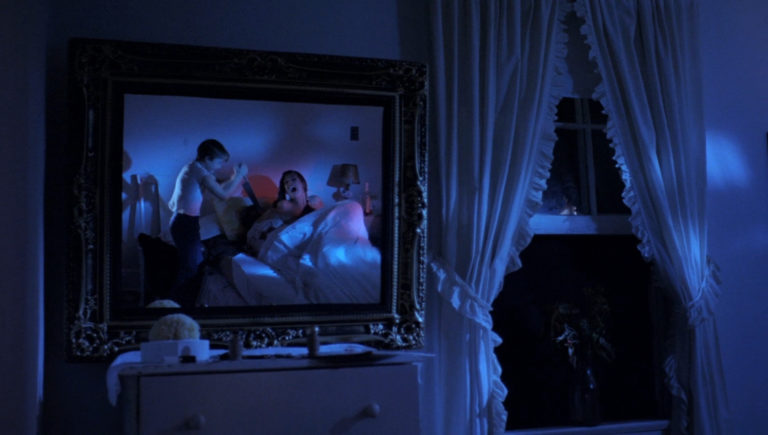
The bogeyman (alternately spelled “boogeyman”) is one of the most persistent urban legends of all time and seems to have a variant in nearly all cultures across the world. In its most basic form, the legend of the bogeyman is of a malevolent entity who focuses his wrath upon children who’ve been misbehaving. He will either scare them by appearing through their bedroom windows at night or scratching on the windowpane. In more extreme instances, he abducts the children and takes them for a terrifying walk in the night—or in some cases even eats them. This 1980 supernatural horror film appropriates the bogeyman concept and modifies it to tell the tale of two siblings who are terrorized by the ghost of their mother’s murdered boyfriend, who has recently escaped being imprisoned in a mirror in their house.
The Hitcher (1986)
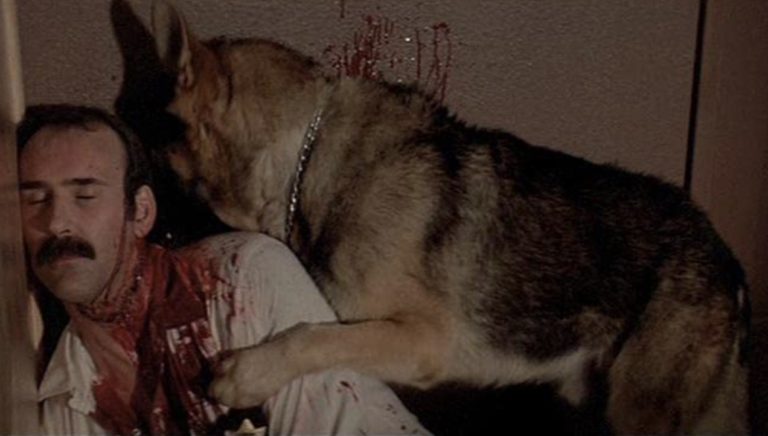
Jan Harold Brunvand was a pioneer in the research of urban legends and even in popularizing the term “urban legend.” His first was 1981’s The Vanishing Hitchhiker, named after the persistent story of someone picking up a hitchhiker who mysteriously vanishes, often while the car is still moving. The hitchhiker in this film is a lot more sinister. The Hitcher is a grisly and nihilistic film—Roger Ebert gave it zero stars— and stars C. Thomas Howell as Jim, who innocently picks up a hitchhiker named Ryder (Rutger Hauer) in Texas while driving a Cadillac Seville from Illinois to California. Ryder, for no apparent reason, begins making Jim’s life a living hell, appearing and disappearing and reappearing into his life with escalating levels of malice and terror. It is also thought that The Hitcher was partially based on The Doors’ song “Riders on the Storm” (“there’s a killer on the road”) and the 1953 film noir The Hitch-Hiker, which was said to be partially based on the real-life spree killer Billy Cook.
Candyman (1992)
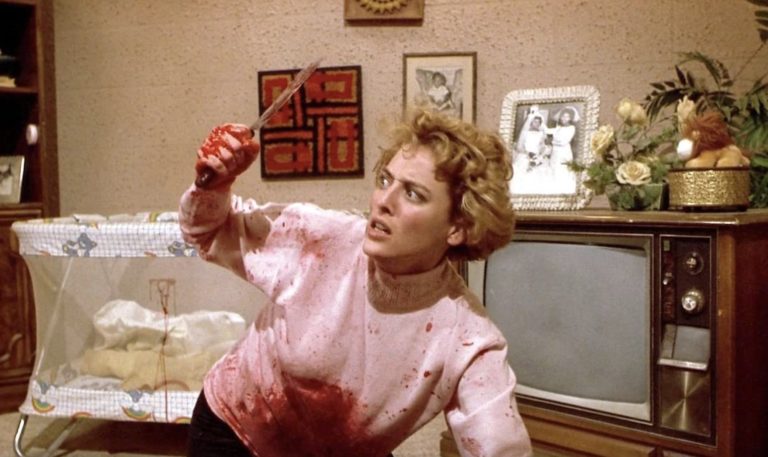
This is another film that was partially based on urban legend and partially based on real-life events. Although rumors that psychopaths routinely lace Halloween candy with razor blades have been a persistent element of American pop culture for decades, the only verified case of this ever happening was a 1974 incident when Ronald Clark O’Bryan, facing financial ruin and seeking to cash in on an insurance policy, murdered his own son by lacing his Halloween Pixy Stix candy with cyanide. But a real-life serial killer who was called the “Candy Man” was Dean Corll, who worked in a Houston candy factory and sometimes lured his 28+ male victims by giving them candy. But this film is based in Chicago and features two women (Virginia Madsen and Kasi Lemmons) who research urban legends and search the infamous Cabrini-Green project building for a legendary figure—either a human or a spirit—who lures his victims with candy.
I find campfire stories and urban legends are kind of the bread and butter that inspires a lot of people who are making horror and thriller. There is a nugget of truth behind these sort of cautionary tales. When you have something very truthful that taps into the zeitgeist, you can have something transformative there.
Jordan Peele Talks ‘Get Out’ And His Love For Horror Movies
The Curve (1998)
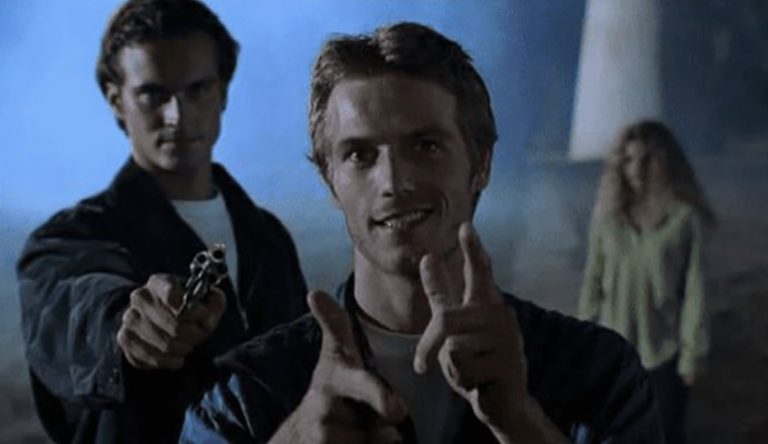
A persistent urban legend—and urban legends are characterized both by their persistence and their unverifiable nature—is called “pass by catastrophe,” which claims that many colleges have a policy where if your dorm roommate dies or is killed during a semester, you will receive straight A’s in all subjects merely because of the trauma. In The Curve, the legend is modified so that your roommate has to commit suicide. Tim (Matthew Lillard) and Chris (Michael Vartan) hate their roommate Rand (Randall Batinkoff) and devise a way to poison him, push him off a cliff, and make it look like a suicide so that they can get passing grades.
8mm (1999)

One of the most famous urban legends of all time is that of the “snuff film,” wherein women are trapped in a scenario wherein they are raped, tortured, and then murdered all while being filmed on camera. Years ago, Charlie Sheen saw a Japanese gore film called Guinea Pig that he found so realistic, he reported it to the police. In 8mm, Nicolas Cage stars as a surveillance expert who is hired by a wealthy woman to investigate the identity of a young girl who appeared on a snuff film that the woman found in her recently deceased husband’s private safe. The film shows a muscular man in a leather hood stabbing and torturing a girl to death. Cage’s character discovers the girl’s identity, and to his shock, he also finds that the film is real.
Dead Man On Campus (1999)

As with The Curve, Dead Man on Campus is based on the urban legend of “pass by catastrophe,” wherein a failing student can get a passing grade if their roommate dies. In the dark comedy Dead Man on Campus, two roommates named Cooper and Josh seek to find another roommate whom they can mentally torture into killing himself. Their first target turns out to be a bit of a loose cannon who might be likelier to get Cooper and Josh killed rather than himself. Then they prey on a nerd who suddenly realizes that something is strongly askew with his roommates. They finally move in with a rock musician who helps them secure the passing grades they so desperately desire.
Urban Legend: The Trilogy (1998- 2005)

This film as well is its sequels—Urban Legends: Final Cut (2000) and the direct-to-video Urban Legends: Bloody Mary (2005)—all focus on popular urban legends to deliver the horror. The first film centers around murders on the campus of a tony New England university that all seem to be modeled on well-known urban legends, including snuff films and the legend of someone who is knocked unconscious, only to wake up in an ice-filled bathtub to discover that an internal organ has been removed. The final film in the trilogy revolves around the legend that you can conjure “Bloody Mary” from a mirror by repeating her name. Other urban legends that the trilogy evokes include a horde of spiders suddenly erupting from someone’s face or hair, a man who dies in a tanning bed, and a man who is electrocuted to death while urinating on an electric fence.
The Blair Witch Project (1999)
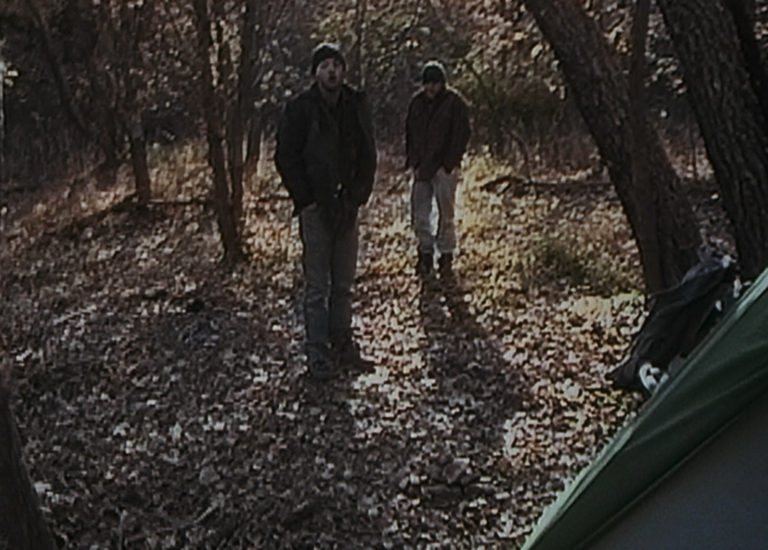
This ingeniously marketed found-footage film—which also launched a craze of copycat films—made $140 million on a paltry budget of only $30,000. The filmmakers circulated flyers at the 1999 Sundance Film Festival claiming the film was real and that it had been shot by three hikers who’d been killed under mysterious circumstances. The legend goes back to a Maryland town called Burkittsville—also known as Blair—where seven children went missing in the late 1800s. In the 1940s, an old hermit who had actually killed the seven children came down from the mountains and blamed it all on the fictional Blair Witch.
The Beach (2000)
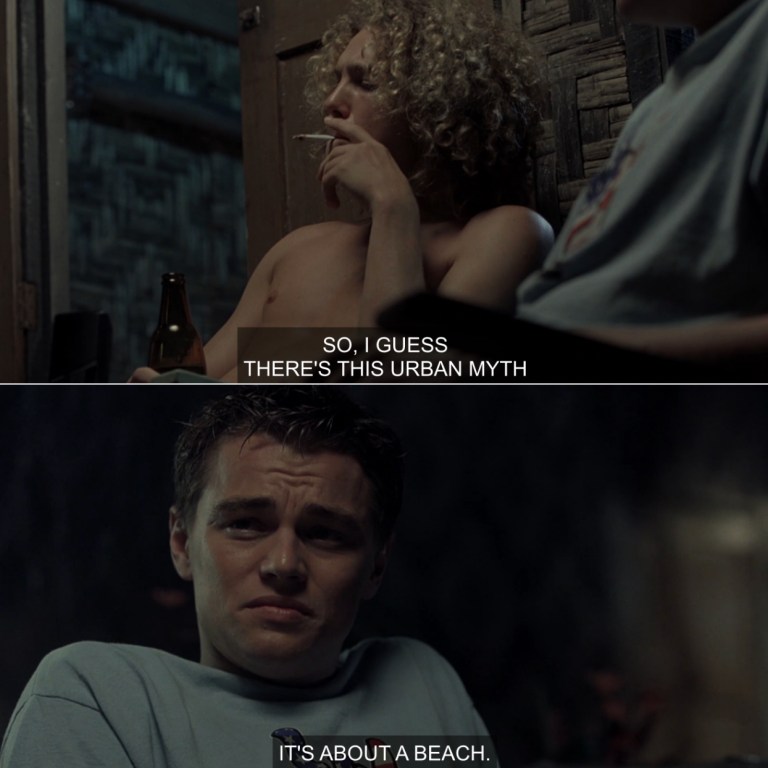
Danny Boyle directed this adventure drama based on the novel by Alex Garland. Cynical American tourist Richard (Leonardo DiCaprio) seeks adventure while traveling in Thailand. When a drug addict in a hostel tells him about a mythical perfect beach where a group of people live in paradise together, Richard convinces two acquaintances Étienne (Guillaume Canet) and Françoise (Virginie Ledoyen) to join him in the adventure of a lifetime. The trio survives the deadly journey and finds the titular beach but things are not as idyllic as they were promised.
The Ring (2002)
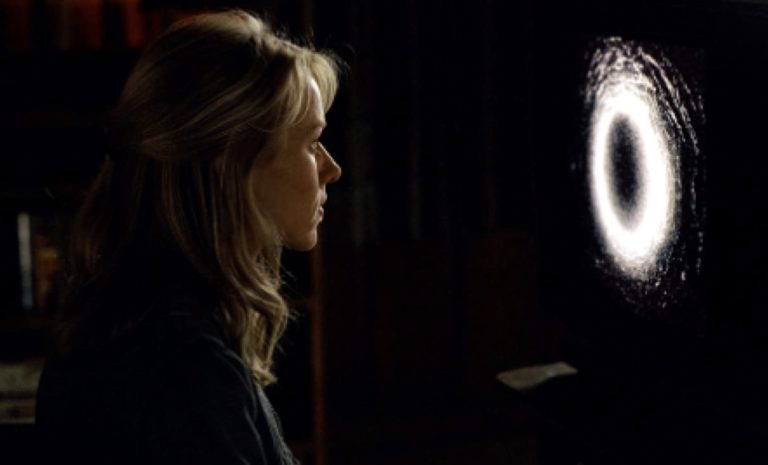
This Japanese sequel to 1998’s Ringu, as well as all of the wildly successful American remakes, center around a girl alternately named Sadako and Samara who had supernatural abilities and was thrown down a well and returns to wreak vengeance through a cursed videotape that kills anyone who watches it within a week after their first viewing. The character was based on an ancient Japanese legend from the 1300s where a servant girl named Okiku didn’t requite the romantic advances of a samurai named Aoyama and who was forced to become his slave anyway. Okiku committed suicide by throwing herself down a well and haunting Aoyama to the point of insanity.
The Mothman Prophecies (2002)
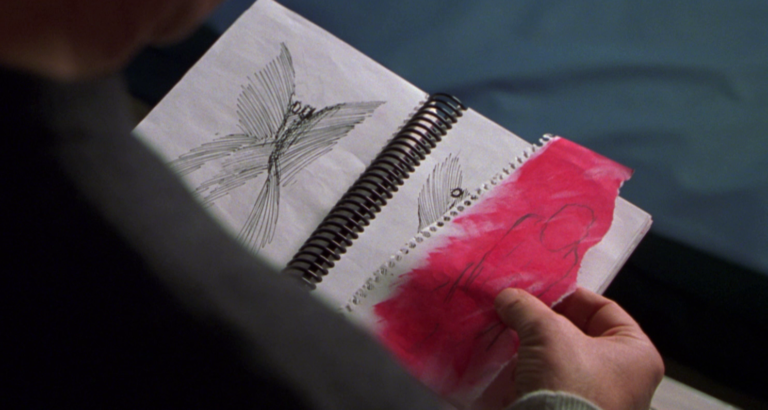
In the wild and woolly and almost entirely rural state of West Virginia, a persistent urban legend in the small town of Point Pleasant dictates that a moth-like creature with red eyes, possibly the spirit of a long-deceased Indian chief, is often spotted by locals and is blamed for a bridge collapse that led to fatalities. In this cinematic rendering of the legend, Richard Gere and Debra Messing star as a married couple who are looking to buy a house in Virginia but get lost and wind up deep in West Virginia. After a car crash, Messing’s character says she saw a moth-like creature with red eyes that had been flattened against the car’s windshield during the accident. Later in the film, a bridge collapses.
When A Stranger Calls (2006)
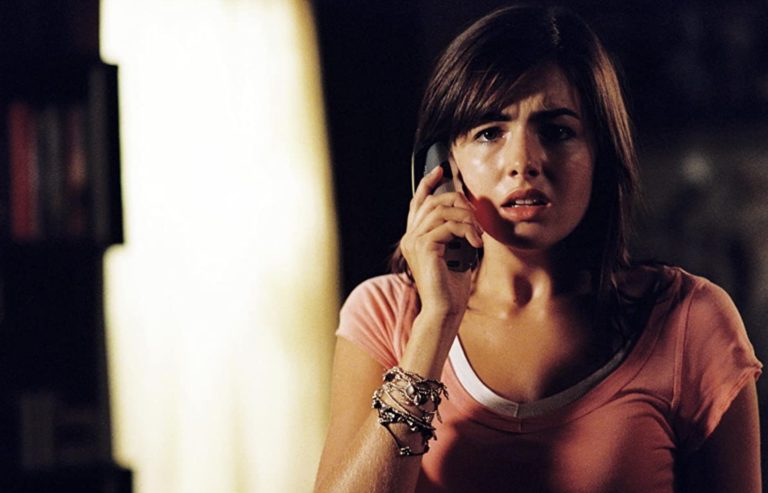
This remake of the 1979 classic horror film of the same name also works on the “Babysitter and the Man Upstairs” legend, but instead of confining it to the first 20 minutes, it stretches it out through the entire movie. The pacing is also different—it starts with a sheriff who enters a home where a mass murder has just occurred—three children and their babysitter, all of them killed by a burglar who murdered them with his bare hands. Then it jumps back to earlier in the evening when a sixteen-year-old babysitter named Jill Johnson, being punished by her parents for using too many cell-phone minutes, is forced to spend the night babysitting for a wealthy family.
Trick ‘r Treat (2007)
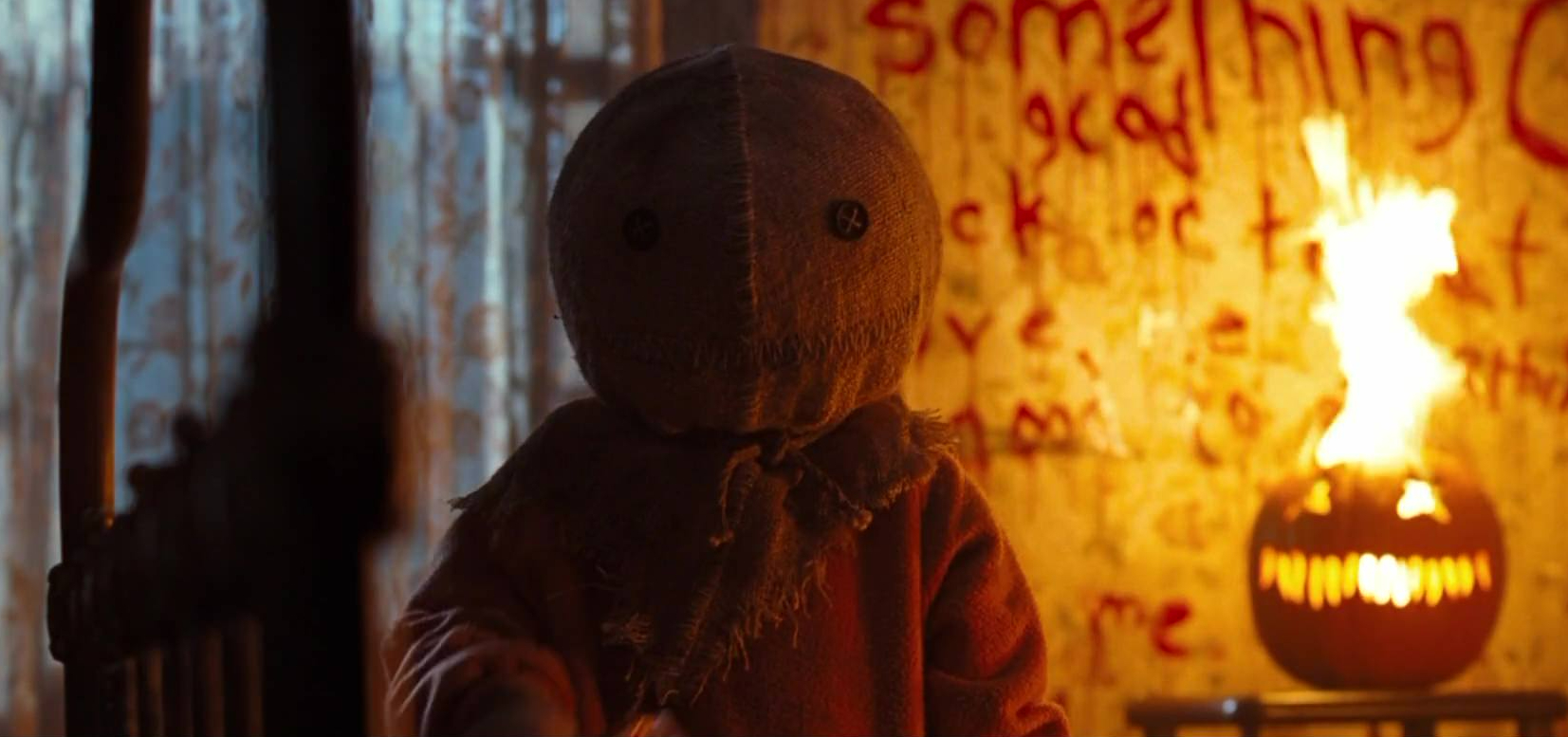
This anthology horror film focuses on five different stories, all of them occurring on Halloween night and some of them featuring the same characters. All of the characters are connected by the looming presence of Samhain, the mythical demonic creature who hovers over All Hallows’ Eve. Sam Wilkins is one of the characters who appears in more than one of the stories, and one of his murder methods is to kill children using poisoned candy, which was used as a trope in The Candyman as well as a murder method used in the real-life 1974 killing of his own son by Ronald Clark O’Bryan.
Vacancy (2007)
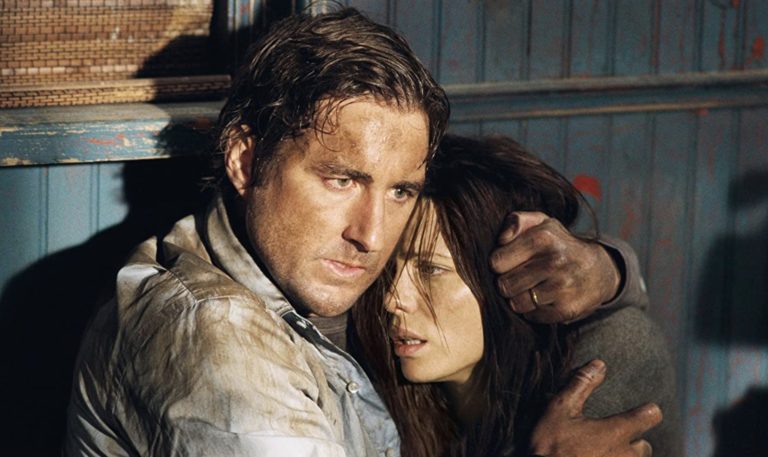
This claustrophobic thriller stars Luke Wilson and Kate Beckinsale as David and Amy Fox, a bickering couple on the verge of a divorce who wind up at a ramshackle motel in a small remote town that is populated only by a creepy desk clerk, obviously borrowing many elements from Alfred Hitchcock’s Psycho. When they get into their room, they find VHS tapes sitting above the television and pop one in the player, only to realize to their horror that it’s a snuff film—a popular urban legend—in which previous tenants of the room are brutally murdered. The rest of the film involves their desperate attempts to flee the motel. Vacancy is also loosely based on the true story of a voyeur who built a “viewing platform” above the rooms the roadside motel he owned.
Cropsey (2009)

The surname “Cropsey” first appeared in the New York area around colonial times. A famous early Cropsey was the painter Jacob Cropsey, who was from Staten Island but wound up being buried in Sleepy Hollow, NY, another site of a famous urban legend. But sometime around 1900, the legend of the “Cropsey Maniac” was born in and around New York—a bogeyman-like character who scared both children and adults alike. This 2009 documentary begins with an examination of the Cropsey legend and links the legend to the story of Andre Rand, a real-life child-kidnapper from Staten Island.
Triangle (2009)
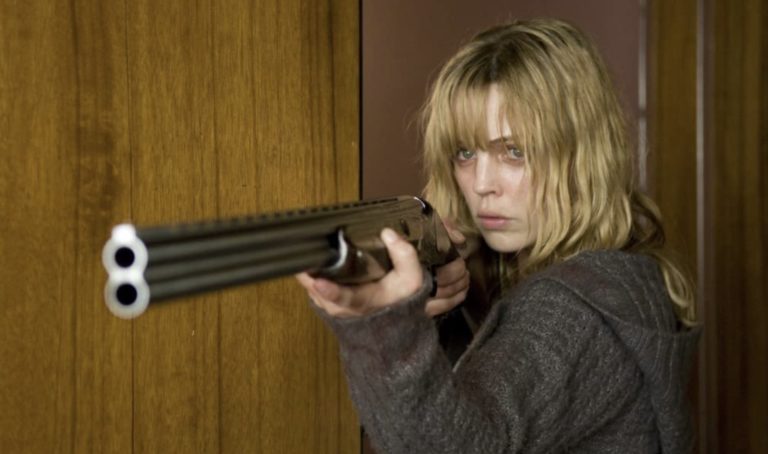
Being strictly literal, it would be a mistake to refer to the folklore surrounding the Bermuda Triangle as an “urban” legend, since it refers to a part of the Atlantic Ocean where there is nothing but deep water and not the hint of a city. But all the way back to the times of Christopher Columbus—whose crew reportedly saw a strange light one night through the dark sea fog—there have been rumors that this area of the ocean is acutely dangerous for anyone who tries to either sail it or fly above it. Numerous fatal accidents have been blamed on the Bermuda Triangle’s supposedly deadly allure. In this film, a single mother and her friends who are on a boating trip in the Bermuda Triangle are forced to abandon their boat and board what appears to be a deserted cruise liner. But the seemingly abandoned ship is not deserted at all.
V/H/S (2012)
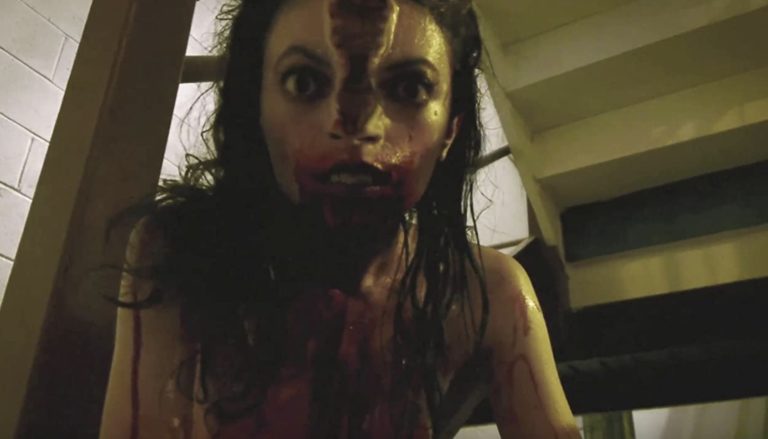
This anthology video—which led to two sequels, V/H/S/2 (2013) and V/H/S: Viral (2014)—was a joint venture between Brad Miska and the website Bloody Disgusting. There are five separate stories—one dealing with a college party gone awry, another with a couple traveling cross-country, another involving an online video chat, and the fifth and final one taking place on Halloween night—but only the third, called “Tuesday the 17th,” involves an urban legend. A group of college kids with a videocamera venture into the woods Blair Witch style, unaware that there’s a creepy urban legend surrounding these woods.
The ABCs Of Death (2012)
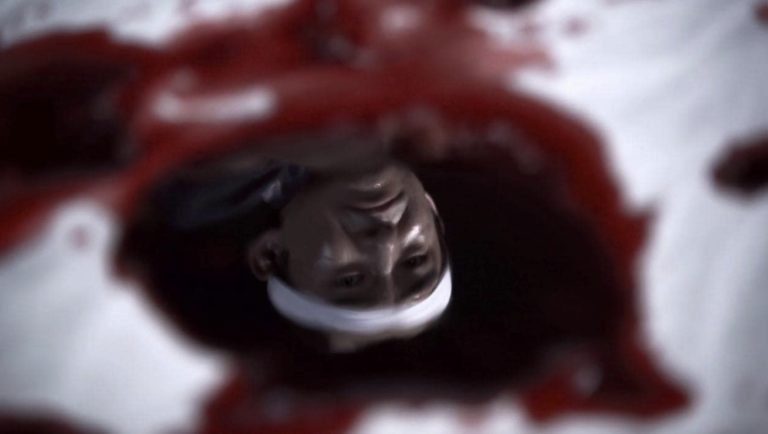
This anthology horror comedy film features an astounding 26 shorts, each by a different director from 15 total countries. The only segment that involves an urban legend is Angela Bettis’s “E Is for Exterminate,” which revolves around the ubiquitous urban legend of spiders suddenly erupting from somewhere on someone’s head. One of the earliest versions involved a girl who used a lot of hairspray on her bouffant but never washed her hair. One day, she suddenly noticed blood trickling down her cheek and realized to her horror that spiders had made a nest in her hair. In this short film, a man keeps attempting to kill a spider and keeps failing. He complains for about a week about itches in his ear, only to find to his horror one day that baby spiders have hatched out of his ear.
Willow Creek (2013)
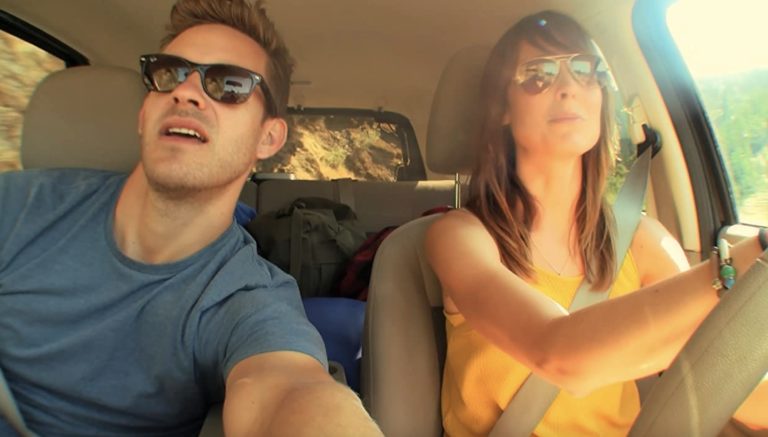
Legends of a giant apelike creature with superhuman strength that stalks remote areas are a feature of most world cultures. What Asians refer to as the Yeti or the “Abominable Snowman,” Americans refer to as Bigfoot or the Sasquatch. In this found-footage horror comedy by Bobcat Goldthwait, a young couple, fascinated with the legend of Bigfoot that emerged around a 1967 film clip purporting to show him walking in the woods near Willow Creek, CA, venture up to Northern California to go camping in the woods for a cheap thrill. Instead, they find real-life horror.
Killer Legends (2014)
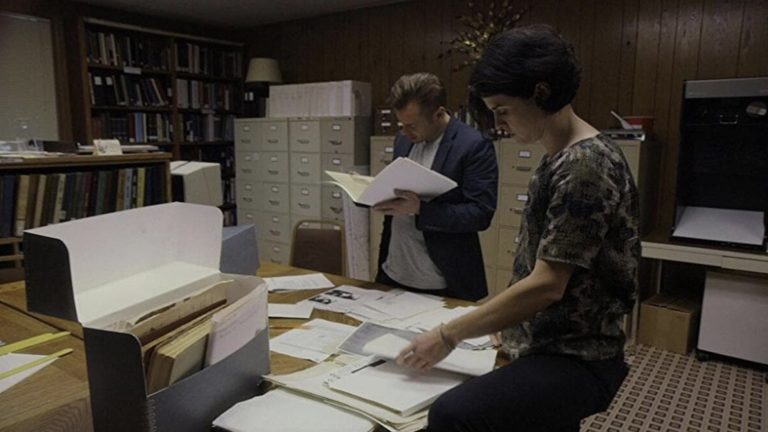
This documentary, written and directed by Joshua Zeman, focuses on the origin of several popular urban legends: “The Hookman,” a man with a steel claw for a hand who murders teenagers parked in Lover’s Lane; “The Candyman,” which focuses legends of poisoned Halloween candy but specifically the real-life case of Ronald Clark O’Bryan; “The Babysitter and the Man Upstairs,” popularized in films such as Black Christmas and When a Stranger Calls; and “The Killer Clown,” which examines coulrophobia, which is a clinical fear of clowns along with a focus on serial killer John Wayne Gacy, who performed as “Pogo the Clown” at children’s parties when he wasn’t raping and killing 33 young men.
Death Passage (2015)

This is the American release of a 2014 Australian film called Lemon Tree Passage, which deals with an urban legend from Down Under about a ghost of a motorcyclist who warns young drivers to stop driving recklessly. When a group of backpackers witness the ghost firsthand, they realize that a demonic spirit has possessed the area and exposes them to horrors that go way beyond the simple myth of a cautionary ghostlike motorcyclist.
Slender Man (2018)
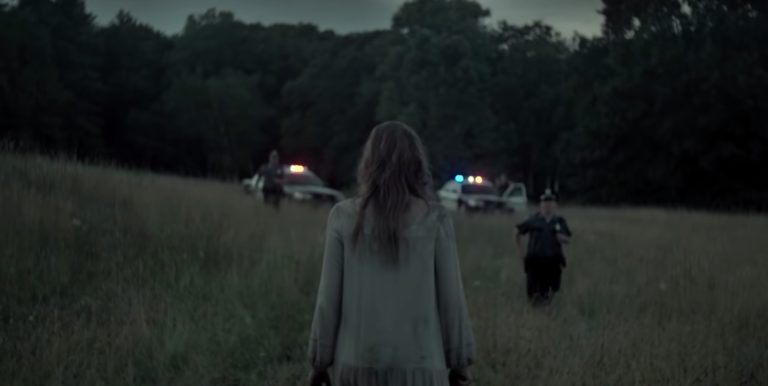
The myth of “Slender Man” may be one of the first, if not the first, prominent urban legend that originated entirely online. In his most basic form, he is a tall, spindly, well-dressed man with no face who sometimes has tentacles coming out of his back. In 2014, two Wisconsin girls took the online meme to its extreme when they stabbed a classmate and told them Slender Man had instructed them to do it. Sylvain White, director of this film, said he became aware of Slender Man through video games and when his niece dressed as Slender Man for Halloween.
The Curse Of La Llorona (2019)
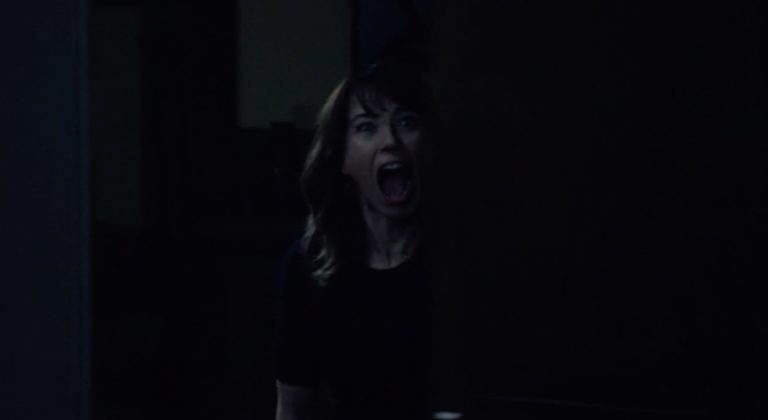
La Llorona is a Mexican urban legend that has existed for generations. In its basic form, it tells the story of a woman named Maria who married a rich man and had two children with him. When she finds him cheating, she drowns her two children; in some versions, she also drowns herself afterwards. After dying, she is repelled from heaven’s gate and returns to Earth as the “Weeping Woman,” who hovers above the ground in a white nightgown and wails constantly in search of her children. This 2019 rendering of the Mexican folk legend has many predecessors: the 1933 Mexican film La Llorona (1933); La Maldición de la Llorona (The Curse of La Llorona, 1963); KM 31: Kilómetro 31, (2006); and Mama (2013).
Scary Stories to Tell in the Dark (2019)
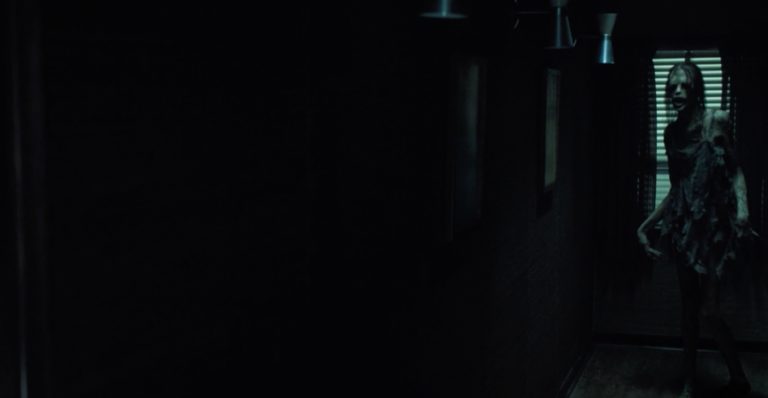
This movie anthology adaptation of the wildly popular children’s book series was made by Guillermo del Toro and André Øvredal. Alvin Schwartz’s original book series also explained the origins of these campfire-style tales which trace all the way back from ancient Babylonian myths to modern urban legends. In “The Toe,” a kid digs up a big toe in a garden, a story that has roots in Germany and England. “The Red Spot” is a version of a story told in the book The Mexican Pet by folklorist Jan Harold Brunvand. “The Pale Lady” can be traced back to a 1940 story from Indiana called “The Rash Dog and the Bloody Head.”
Frogman (2023)
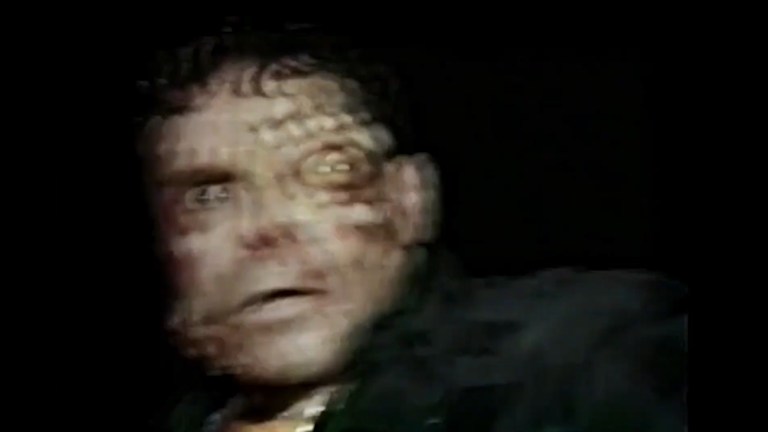
A found footage horror movie about the local urban legend of the Frogman in Loveland, Ohio. Dallas (Nathan Tymoshuk) becomes obsessed with the legend after catching a glimpse of the creature on camera while on a family vacation as a boy. As an adult, Dallas decides to make a documentary about the Frogman and enlists his friends to travel to Loveland with him to capture definitive proof that the legend is real.
See our full Frogman review/analysis here.
More Urban Legend Horror Movies
- Frogs (1972) deals with a popular legend of an infestation of hostile animals—birds, spiders, or anything—but in this case, obviously, the invaders are green and make croaking sounds.
- Snowbeast (1977) is a TV movie based on the Asian legend of the Abominable Snowman.
- The Burning (1981) a camp counselor who was severely disfigured in a prank by young campers seeks his revenge.
- Alligator (1980) this comedy by independent director John Sayles focuses on the legend that giant alligators haunt the sewers of big cities.
- I Know What You Did Last Summer (1997) is a famous 90s slasher film that is loosely inspired by the urban legend of The Hook or The Hookman, who was a faceless man in a raincoat with a hook hand that would terrorize teenagers.
- Abominable (2006) is another film focusing on the Asian myth of the Yeti.
- Carved: The Slit-Mouthed Woman (2007) is based on the Japanese urban legend of a ghostly woman with her mouth cut from ear to ear who approaches people at night and asks them, “am I pretty?”
- Nine Miles Down (2009) is based on a Russian legend about drillers who venture so deep, they encounter horror.
- Chain Letter (2010) focuses on the myth that if people fail to forward a chain letter to their friends, someone will kill them.
- Bunnyman (2011) revolves around a group of maniacs, one in a bunny suit, who terrorize villagers.
- The Barrens (2012) centers on the legend of the Jersey Devil in the Pine Barrens of New Jersey.
- Babysitter Massacre (2013) and all of its sequels are lesser-known films centering on the myth of “The Babysitter and the Man Upstairs.”
- Beneath (2013) a group of friends encounter a beastly, blood-thirsty fish from a local urban legend while boating on a lake.
- Big Legend (2018) is another film focusing on people who venture into the woods in search of Bigfoot—and, to their dismay, find him.
